Look at the above photo. For me it captures all that is good in street photography, with all the classic features of a great shot. Taken last week in a waterlogged post-eclipse Venice by George James, this composition has everything: A superb location, the shiny wet pavement, the reflected subject and the decisive moment. The young man with the umbrella and flying messenger bag is caught in mid-stride, pacing across the promenade with determination against the dramatic backdrop of the lagoon and its almost seamless connection to terra firma.
This shot has another claim to your attention: It was taken using the classic 50mm focal length which generations of professional photographers, including the great Henri Cartier-Bresson have lauded as the lens for street photography. George took this with some of the finest equipment available today, the Leica M-P and the stupendous, if costly, 50mm Apo-Summicron.
It is indeed a wonderful shot, but not achieved without effort. George spent the best part an hour lurking under a café awning waiting for this perfect opportunity. The remaining modest examples in this article are from my camera, I should point out.
Better at 35mm?
George’s photograph leaves you in no doubt that 50mm is a great focal length for street work. But would this shot have been better at 35mm or, even, at 90mm? It set me thinking about the ideal focal length for street photograpy. Everyone has a strong view on this and, without a doubt, beginners are confused.
Eric Kim, writing this week, explains how he tried everything before deciding on 35mm:
I see the last 9 years of my photography as a good apprenticeship. I have gone through a lot— through shooting pretty and boring landscapes, making hideous HDR photos, and even dare I say— selective color. I have also experimented with different approaches in street photography. I shot from the hip, I shot with telephoto lenses, I experimented with different camera systems (point-and-shoot, DSLR, rangefinder), and with different photographic mediums (digital, film, medium-format, smartphone). I also experimented a lot with different focal lengths (24mm, 28mm, 35mm, 50mm, 200mm). I also experimented between black and white and color.
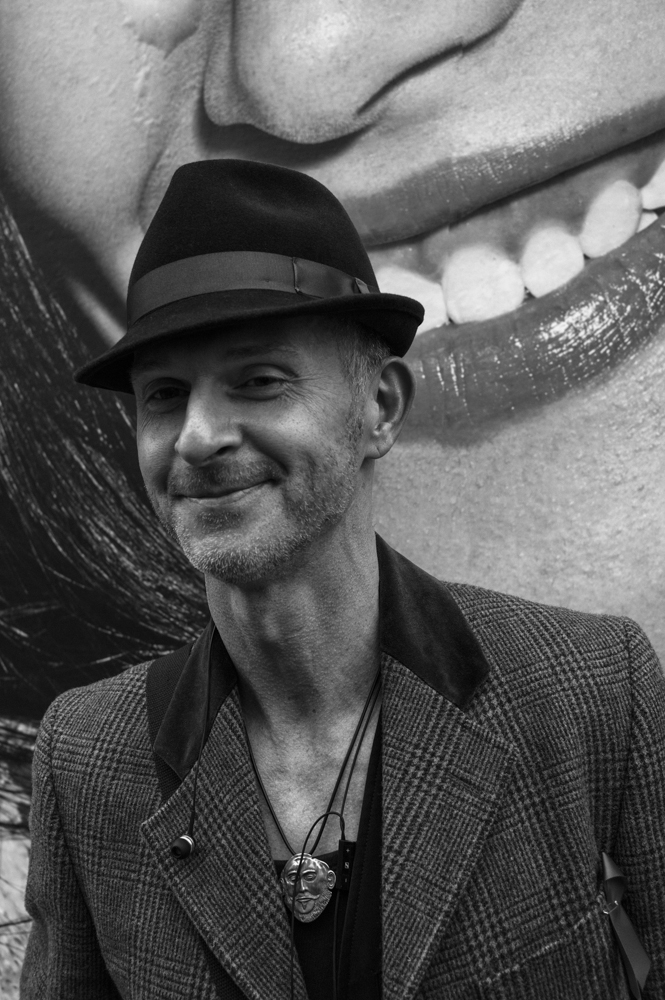
Yet, as I am sure Eric will agree, you can read all the advice in the world but in the end only your own personal experience counts.
Characteristics of the various focal lengths come into play in your decision. In general, at given aperture, the wider the angle the deeper the in-focus area; the longer the lens the narrower the focus zone. This is important because, while a wider lens is more forgiving of slightly off-focus (and lends itself to fixed, zone focus techniques) focus does become critical as you zoom to a narrower angle of view. On the other hand, the wider lens means that you have to be almost on top of your subject.
This is no bad thing. Interaction with your subject, which is a given at 35mm or wider, is good for you and the subject. This is one of the more enjoyable aspects of street work. If you like chatting to people and getting that all-important eye contact you will prefer 35mm or wider.
Favourite
In the past five years 35mm has become the favourite focal length if the runaway popularity of cameras such as the fixed-lens Fuji X100 is to be believed. And many Leica fans would give equal allegiance to the mighty 35mm Summicron. Scratch most street photographers and they will tell you that 35mm is where it’s at. Received wisdom is definitely that 35mm is the place to be. Forget 50mm and all else.
Dig a little deeper, however, sideline the mountain of evidence in favour of 35mm, and the mind is free to roam. Genuine contenders for the street photography range well beyond 35mm. From 28mm, through 35mm to the classic fifty and further, all put a different angle on your shots and your technique. It would be foolish to rule out 90mm or, even, 200mm at an extreme. I would even add in a wider 21mm as a contender. You can have a lot of fun working the street with a 21mm lens where you can stand almost alongside your subject and still get a great shot. All these focal lengths have their adherants but which is the best lens to choose if you can have just one lens?

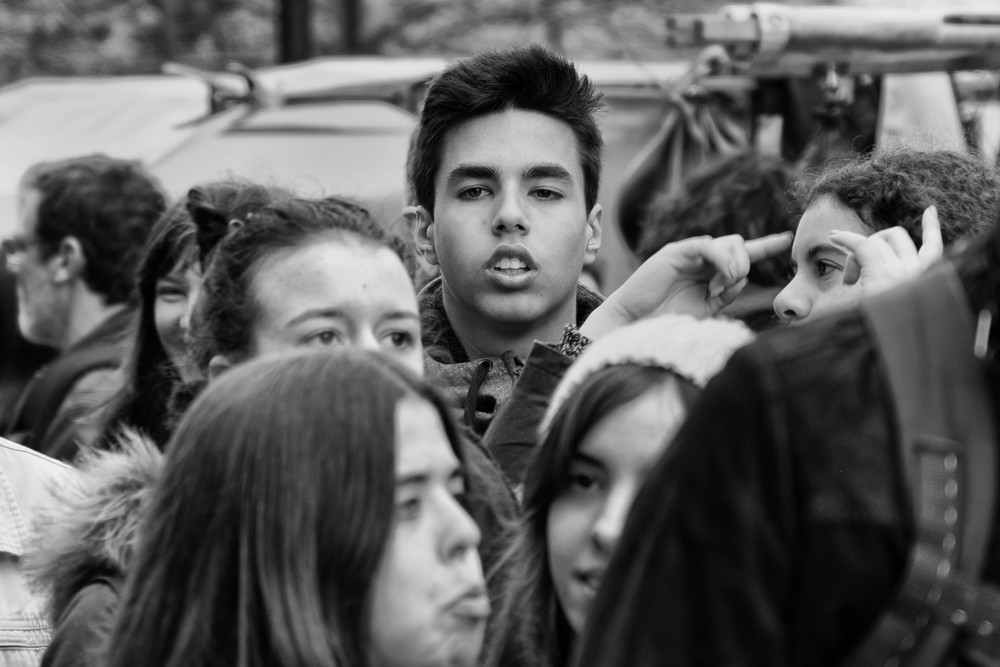
Preference badge
While I enjoy using the Leica 35mm Summicron or, even, the sharp and light 28mm Elmarit, I do tend to prefer a slightly longer lens. The 50mm focal length is just about right for me at the moment but, like many photographers, I’ve pinned my preference badge to different lenses at different times. I could have a different view next year.
Surprisingly, given the domination of the semi-wide 35mm focal length, some experienced photographers actually prefer 90mm, 135mm or even 200mm for street work. True, these lenses are no longer discreet, simply because of their size (except in the case of several petite Leica nineties) but, sometimes, the longer reach can result in excellent candid shots. If you are of a nervous disposition and don’t like to get too close to your subject, a longer lens has its merits.
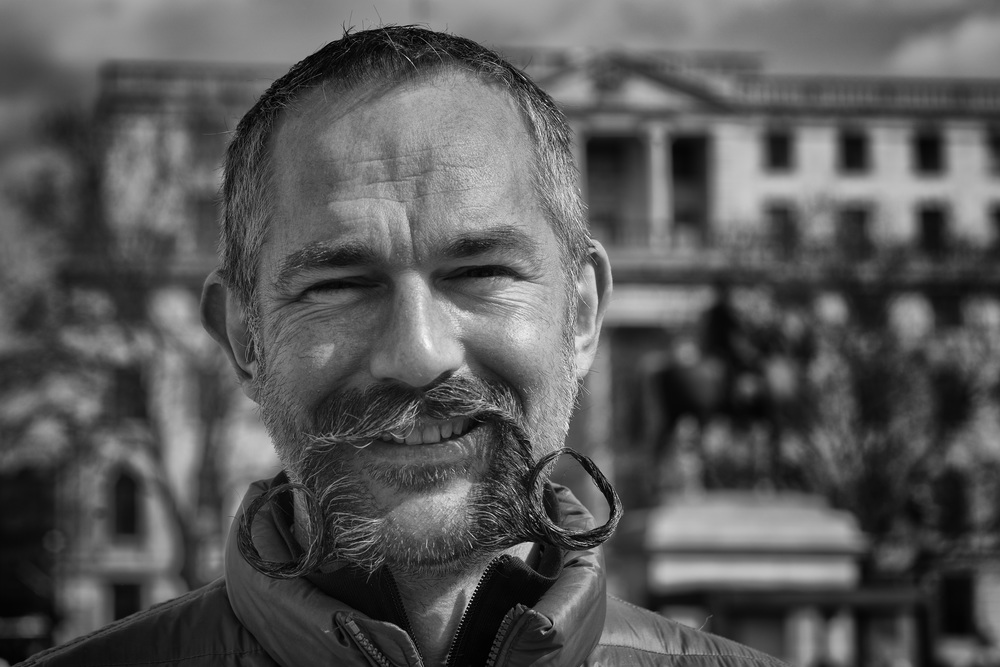
A few months ago I was surprised by the effectiveness of Fuji’s 56mm f/1.2 (85mm equivalent) as a street prime. Thanks to the XT-1’s electronic shutter (topping out at 1/32,000s), I was able to shoot the lens wide open and enjoy impressive subject isolation, something that is more likely with a longer lens and a fast aperture. Surprisingly, the longer focal length wasn’t a deal breaker even at relatively close quarters. In fact, for a photographer who loves street portraiture, 85mm is just about perfect. Fuji’s face detection system works quickly and reliably with this lens, as it does with the 18-135mm zoom, of which more later.

Sweet 75
I also love my 75mm Leica Apo-Summicron, used either on an M or a Sony a7. It is much smaller and compact than the Fuji FX56, but then it has no autofocus motors. That said, I wouldn’t want to feel restricted to 75/85mm for all work. While you can travel happily, for instance, with just a 35 or 50 attached to your camera, longer lenses are more specialised and need wider backup. Yet is wonderful to have around for when the mood strikes. Paired with a 35mm Summicron or, even, a 28mm Elmarit, the 75mm Apo makes perfect street prime combo.
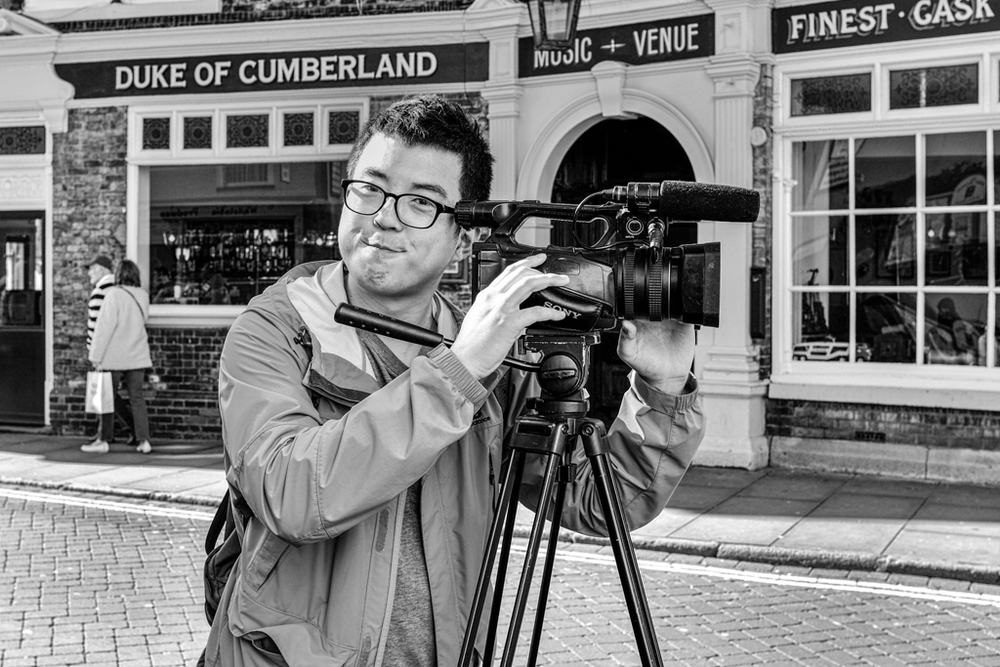
What of zoom lenses? They are seldom mentioned by street photographers and many pundits hold a snobbish disregard for the standard kit zoom as supplied with many DSLRs and mirrorless cameras.
I am not so dismissive. Many modern zooms, particularly those from Fuji (of which I have had most experience), are well up to the challenge of street photography and bring versatility to the pavement without offending with excessive bulk or weight.
Kit zoom
The standard XF18-55mm (27-83mm) Fujinon, which most Fuji owners buy as a kit with one or other camera, is a fine and underrated zoom that readily fulfils the job of being the one lens. It is fast enough at its widest aperture, f/2.8, and still reasonable speedy at maximum reach, f/4. No Fuji owner should feel shortchanged if this is the only lens available. It is small and versatile yet produces sharp results throughout the range. Above all, a lens such as this is a good learning tool.
If you are beginning with street photography a typical kit range of 27-85mm equivalent is an ideal way of trying out the main options. In one lens you get a good 28, 35 and 50, not to mention nearly 85mm if you want to stay more aloof. At every focal length you could possibly get better results with a good prime; but in the big wide world there is not that much difference.
You will be impressed with the results and will soon come to a decision on the perfect focal length for your particular brand of street photography. I recommend selecting just one of these common focal lengths before going out for a day’s shooting, resisting the temptation constantly to twiddle the zoom ring. By sticking rigidly to a succession of different focal lengths over a period of weeks you will soon realise which of them you use most and would prefer in a prime.
Prime investment
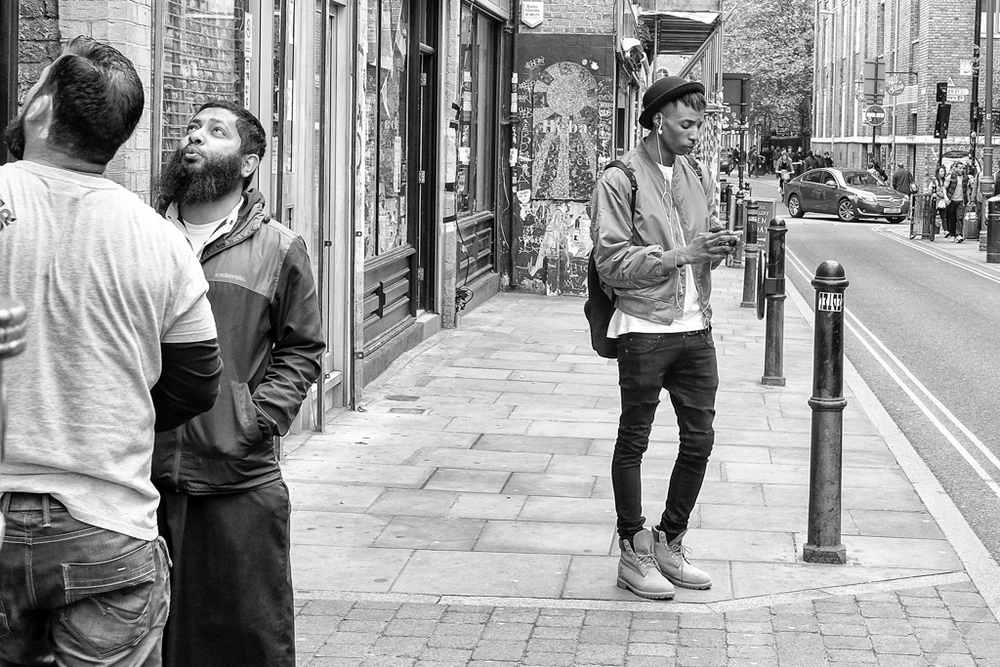
Only when you have decided on your preferred focal length is it worth investing in a good prime. In the Fujinon range I would recommend the fast 23mm or 35mm f/1.4s (giving you 35mm and 50mm equivalent field of view) or, if you want a foot in both camps, the excellent 27mm f/2.8 pancake produces the useful fence-sitting equivalent of 41mm. In the Leica range, the 28mm f/2.8 Elmarit, the 35mm f/2 Summicron or the 50mm f/2 Summicron are all prime contenders for your money. But do take a look at the new range of f/2.4 Summarits. They are smaller, cheaper and ideal for street use.
While all these lenses are fast or reasonably fast, for general street work you do not absolutely need such wide apertures, useful as they are on occasion. Most street work is done at f/5.6 or f/8 in order to achieve a wider depth of field and avoid the need for constant fiddling with focus.
One of the big advantages of using a prime is that you get thoroughly familiar with what you can achieve at a set focal length. There is no chance of zooming. You must carefully consider and frame your subject, using your feet to zoom. It as a pure appeal that is half the fun of street photography.
But what of even longer zooms for street work? Recently I have renewed my acquaintance with the weather resistant XF18-135mm from Fuji. When I tested it in conjunction with my colleague Bill Palmer back in November last year, I was immediately impressed. Now I have acquired another copy and am taking the opportunity to give it a good street outing. Familiar as I am with small and neat primes, the 18-135 takes some getting used to. Nevertheless, I have to admit that the results are persuasive.
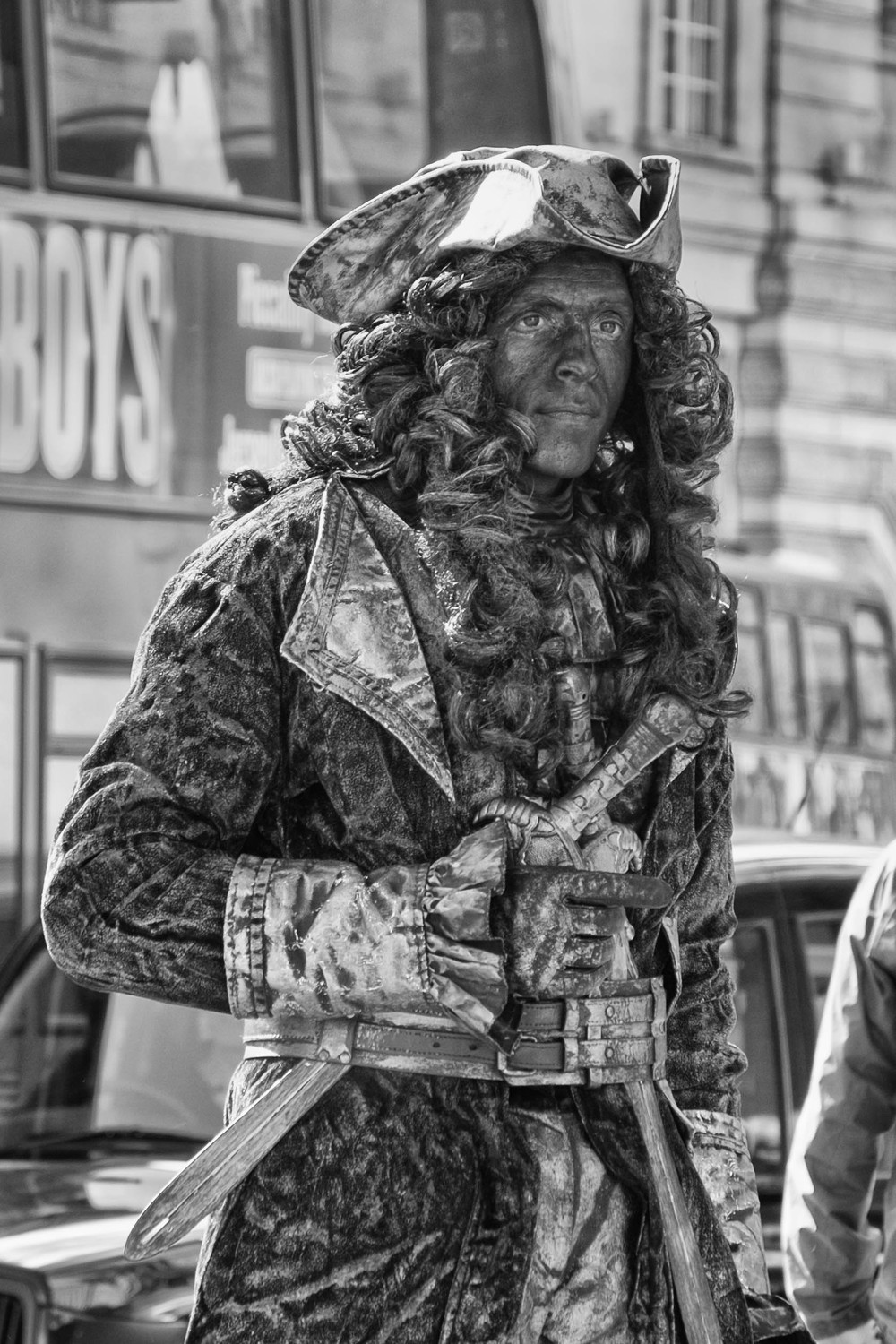
Life at 200mm
Compared with the excellent XF18-55, this is a larger, heavier and slower lens with its bog-standard f/3.5-f/5.6 aperture range. However, as I noted earlier, the slower aperture is not necessarily a deal breaker for street work. You are not going to get fantastic bokeh and subject isolation, as you would with a fast prime, but interesting effects are possible at the longer focal distances.
The range of the XF18-135mm, from a full-frame equivalence of 27 to 206mm, comes in very handy. It takes you way beyond the abilities of the standard 18-55mm and gives you an opportunity to decide if you can rub along with photography at longer distances from the subject. While it will undeniably spend most of its life working the popular and traditional street focal lengths of 28, 35 and 50mm, if does offer the great advantage of doing some remote photography if you wish. It also brings another advantage in five-axis in-lens stabilisation (which is a great help if you are hoping to get sharp hand-held shots at maximum zoom in lower lighting conditions) and weather resistance. In conjunction with the weather-resistant X-T1, this makes for a very serviceable all-season rig.
The 18-135 is indeed highly versatile and, I suspect, is a better bet than carrying both the faster XF18-55 and XF55-200 lenses. While this alternative two-lens combination provides an impressive full-frame equivalent range of 27-300mm, it does so at considerable inconvenience of extra weight and the hassle of changing lenses. I believe the 27-206mm of the 18-135 covers 95% of requirements and is easier to live with. It makes for an ideal travel lens and, mounted on the Fuji X-T1, tips the scales at only 950g compared with the 700g of the same body with the smaller 18-55 zoom. If you want to take just the one lens, this should be high on your list.
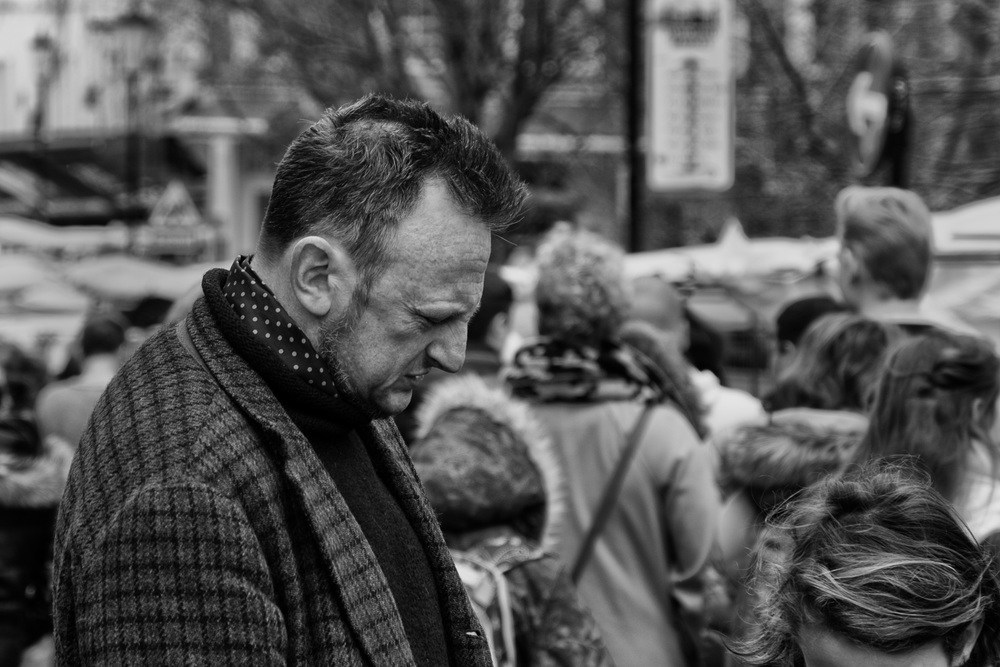
So which is best?
Back to the original question: Which is the best focal length for street photography? The answer is already clear. There is no best. If you listen to most street photographers you will be tempted towards a 35mm prime. If you prefer to be just a tad more remote from your subject you will join Henri Cartier-Bresson with his favourite nifty fifty. But if you are bold you might settle on 75, 90mm or longer. It’s up to you. Don’t be pressured into seeking the holy grail of 35mm if it doesn’t work for you.
So if your current setup is restricted to a standard 18-55mm zoom on an APS-C camera or the equivalent 27-85mm on a full-frame, you can get good results while you work out which focal length you actually prefer. There is no need to feel inferior to the archetypal street-tog with his Leica MP and 35mm Summicron. Having more expensive primes will not make you a better photographer and will not necessarily produce better quality imagines. One thing small primes will do, however, is help you become a less conspicuous operator. This can be a great advantage when working close at wider angles.
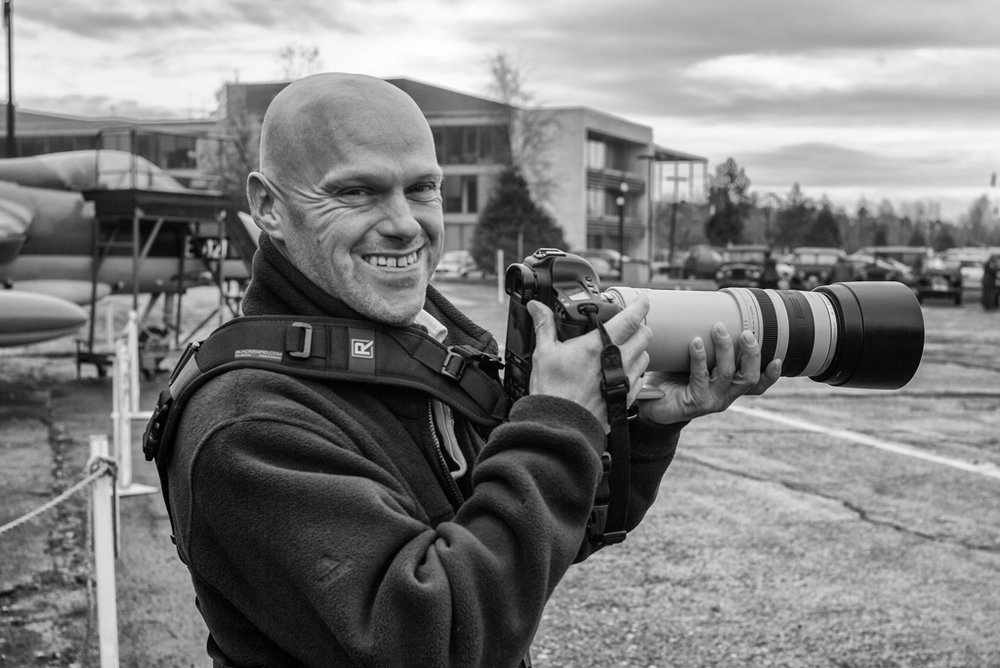
Equipment used in this article:
George’s Leica M-P and 50mm Apo-summicron and my Leica M/Summicron supplied by Red Dot Cameras
Fuji equipment loaned by Chiswick Camera Centre
Sony a7II body loaned by R.G.Lewis
Note for beginners: Throughout I’ve referred to full-frame or 35mm equivalence in focal length. I know this can be confusing at first. The Leica M, as used by George for the Venice shot, has a full frame sensor and therefore the 50mm lens is a standard benchmark. Other examples in the article are taken with Fuji cameras with their smaller, APS-C sensor which has the effect of narrowing the angle of view. So all the Fuji lens apertures must be multiplied by 1.5 to achieve a full-frame equivalence. Hence, the 18-135mm Fujinon zoom provides the same range as a 27-206mm full-frame zoom lens. However, as a crop lens it can he made smaller than the full-frame equivalent and is therefore handier for street work.

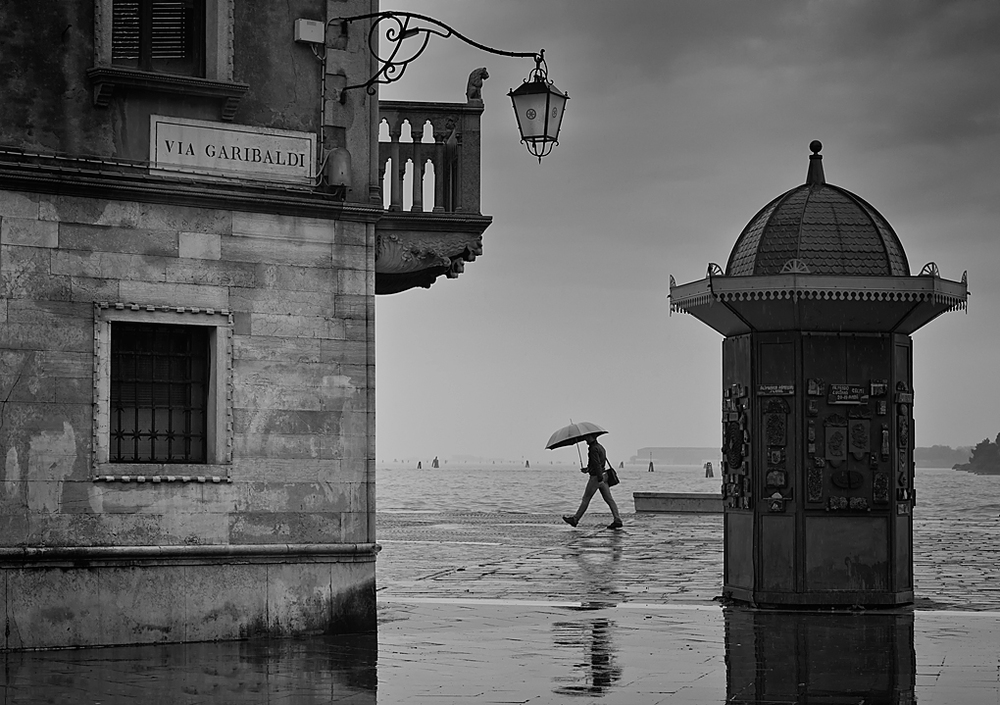
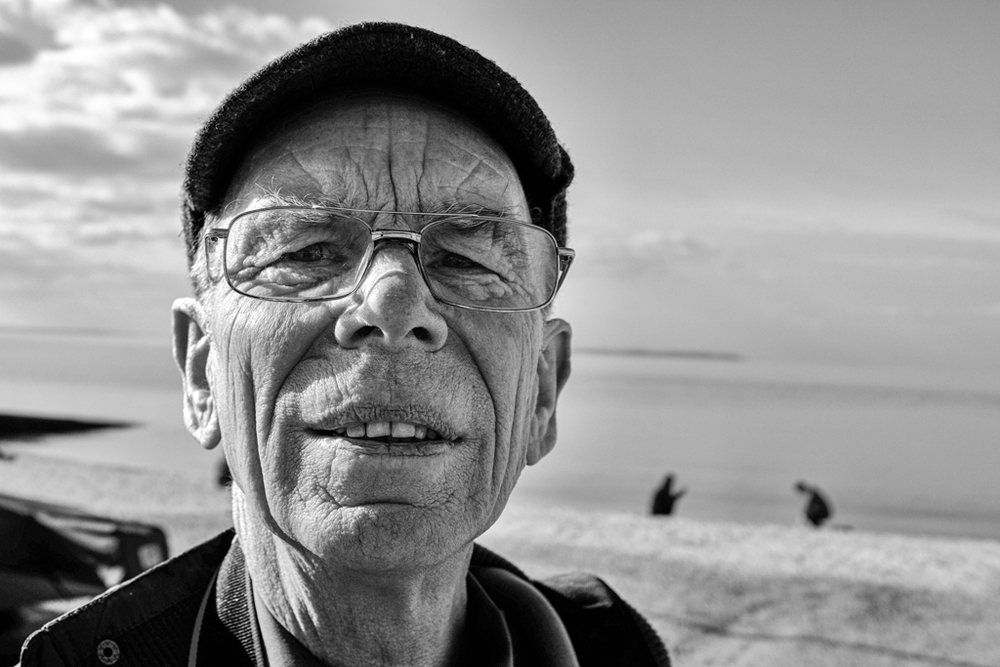
I think I could shoot the remainder of my days with just the XF56 1.2 and the 35. 1.4
You are right, Josh, and so could I. The XF56, in particular, is a fabulous piece of glass. In my experience it is more fun than the Leica Noctilux and, thanks to autofocus, is ridiculously easy to use to good effect.